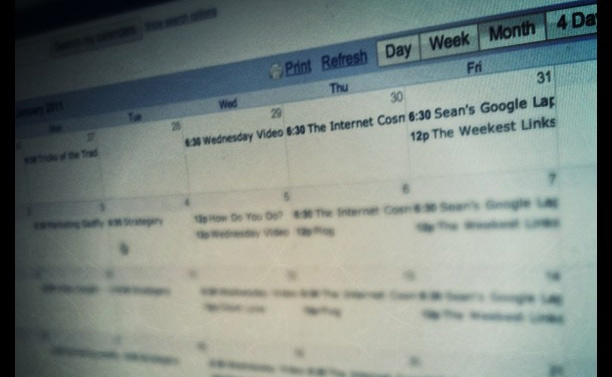
Tips for getting the most out of email marketing
This is the second of a two-part series. Also see:
• How to use your Facebook page to build your nonprofit’s email list
Target audience: Nonprofits, cause organizations and advocates, foundations, NGOs, social enterprises, marketers.
Guest post by Susannah Vila
 Collecting email addresses and using them to mobilize your supporters is one of the simplest but most important tactics for online organizing.
Collecting email addresses and using them to mobilize your supporters is one of the simplest but most important tactics for online organizing.
As Ricken Patel, founder of Avaaz, told us, “Someone operating out of their bedroom can do this better than a multimillion-dollar organization with a huge staff.”
Before you get started, though, look over these tips for how best to turn a list of e-mails into a powerful tool for activism.
Understand the needs of your constituency
1You are communicating with people online in order to serve them, not you and your organization, so begin by asking your membership what they care about most. Why do they support your cause? What are their goals and ideas of success regarding the cause?
Don’t send out any e-mails before you understand what your members care about.
Tip! Ask people on social networks, use free survey services like SurveyMonkey, or use mobile phones.
Draft a solid email

2Write your first e-mail. If you’re lucky, people will read the subject line and the first sentence, so put as many important words in this space as you can — lead with a fact or recent news story that will provoke emotion — and make sure that a link is immediately visible.
Tip! The names attached to your e-mails should be authentic and trusted by your membership. Consider having the e-mails come from your executive director rather than the name of your organization.
Include a call to action
3What’s the action you want to get out of the e-mail? Each e-mail sent out should have one clear action associated with it.
Do you want the receiver to click on a link? Then include it two or three times within the e-mail, and make sure each link takes the reader to the same page.
Are you publicizing an event? Remember to include all pertinent information including time, location and directions.
Be concise
4Keep your e-mails short and to the point. Just as you must grab people’s attention with the e-mail subject line, you must be able to clearly share your message in the short amount of time that they have to read your e-mail.
Tip! Switch it up. Don’t always ask people for the same thing.
Create an editorial calendar

Image by Tippingpoint Labs
5Decide when, and how frequently, you’ll be sending e-mails. Try setting up an e-mail calendar with, for example, one message per week, and stick to it. The only exception is if your cause ends up in the news or if a time-sensitive action arises. In this case, you should break your schedule and send e-mails more frequently. People will be more receptive to your e-mails if the issue you are addressing is in the news.
Send e-mails in the morning when people are more likely to be checking their in-boxes. Avoid Fridays!
Tip! It seems obvious, but it should be emphasized: Don’t send too many e-mails!
Monitor your progress
6Poll again (and again, and again) and check analytics to see how you’re doing. Always check back in with your supporters.
Tip! Everyone wants to make a difference. Your job is give them the right story, one that is true and credible, to persuade them that the world can change and that they can change it. Don’t spend too long talking about a problem without offering a solution.
Set goals
7Set goals for your e-mail campaigns, and use analytics to gauge your success with regard to those goals. How many people clicked on the link you put in the e-mail? If you sent one e-mail at 10 a.m. and one at 4 p.m., which one was opened and clicked on more often?
Create ’email relationships’
8Develop relationships between the sender and the receivers. A real live person with a name rather than an organization often does a better job of grabbing people’s attention.
If there are at least a few of you and you have different roles within your group or organization, consider creating “e-mail relationships” with your membership base so that e-mails on a certain topic always come from Joe B. while e-mails on another topic come from Suzy S.
Tip! Make sure that your e-mail reads like a conversation. The e-mail comes from a real person, so make it sound like a real conversation! Don’t be afraid to use a specific voice or personality.
Follow through
9If someone signs up for your e-mail list, it means they are at least somewhat interested in your work. If someone takes the action asked of them in the e-mail, it means they are more interested — don’t waste that opportunity. Ask them immediately to help with something else. For example, ask your supporter to tell a friend about your cause, to follow you on Twitter or to attend an event.
Write out a list of actions that you will ask of your e-mail list. You should identify an action for the first time signups, and action for those who received their first e-mail and took the action asked of them, and so on.
Make conversation simple
10Is there an e-mail address users can reply to when receiving an e-mail blast from your organization? Make sure that they can click “reply” and reach a real person at a functioning e-mail address.
Keep readers updated
11Do you publish a weekly news round-up or a monthly newsletter? Send this information to your e-mail list!
Welcome new subscribers
12When you receive new e-mail signups, don’t just dump them into the regular list. Send them a welcome e-mail describing the campaign/organization and what to expect. Without this context, the regular e-mails that you send them will not be as powerful or compelling.
 This work is licensed under a Creative Commons Attribution-NonCommercial-ShareAlike 3.0 Unported.
This work is licensed under a Creative Commons Attribution-NonCommercial-ShareAlike 3.0 Unported.








